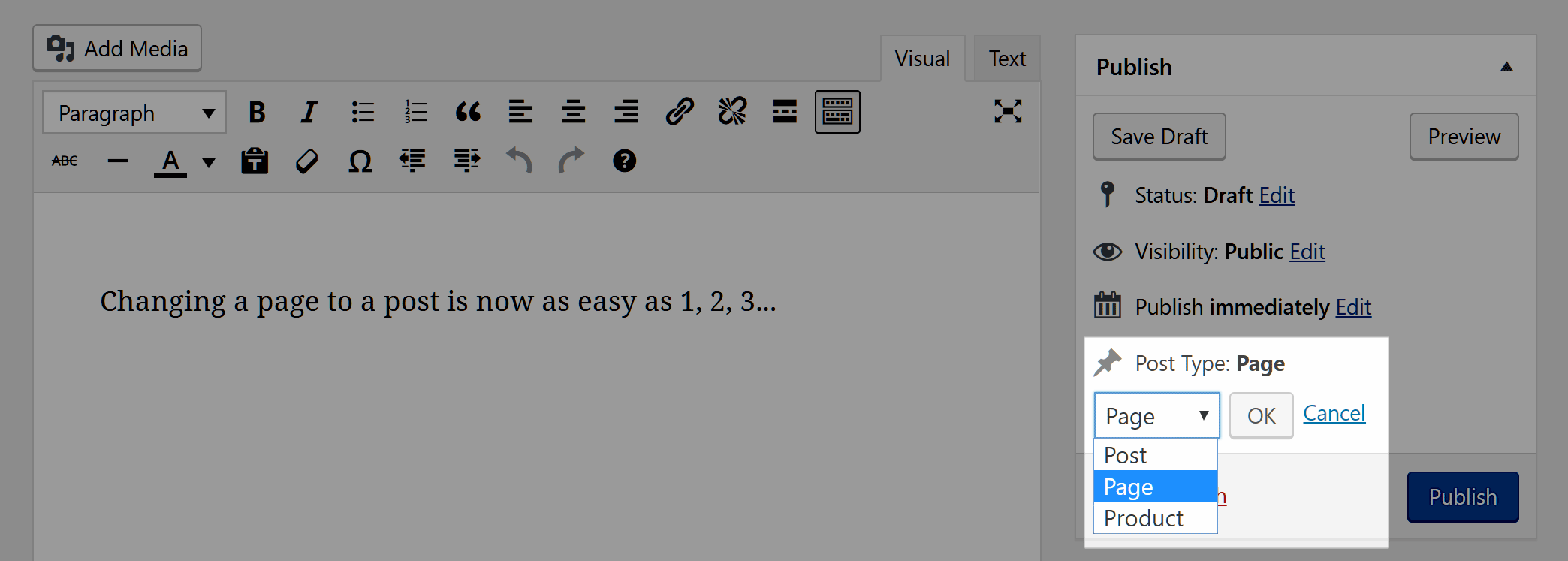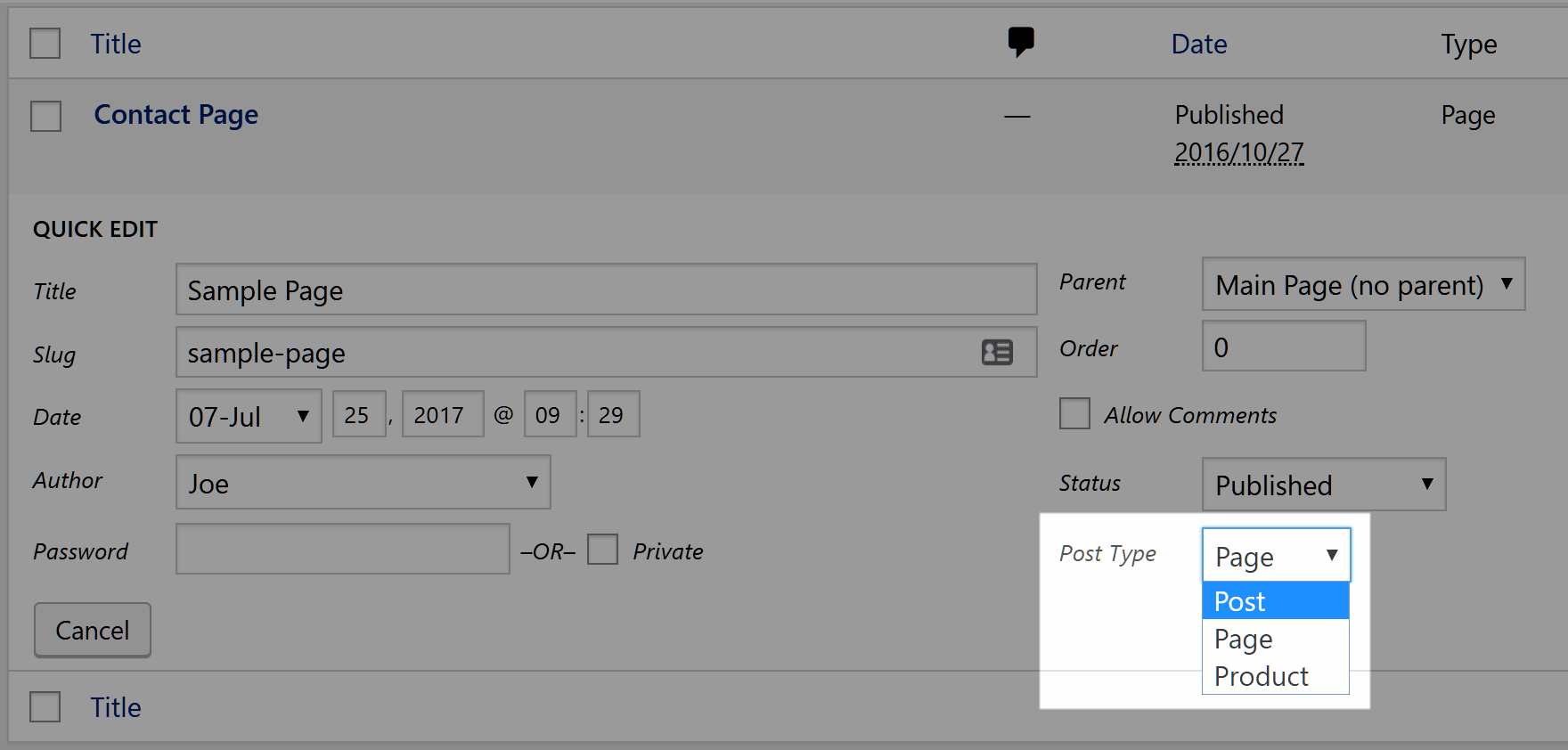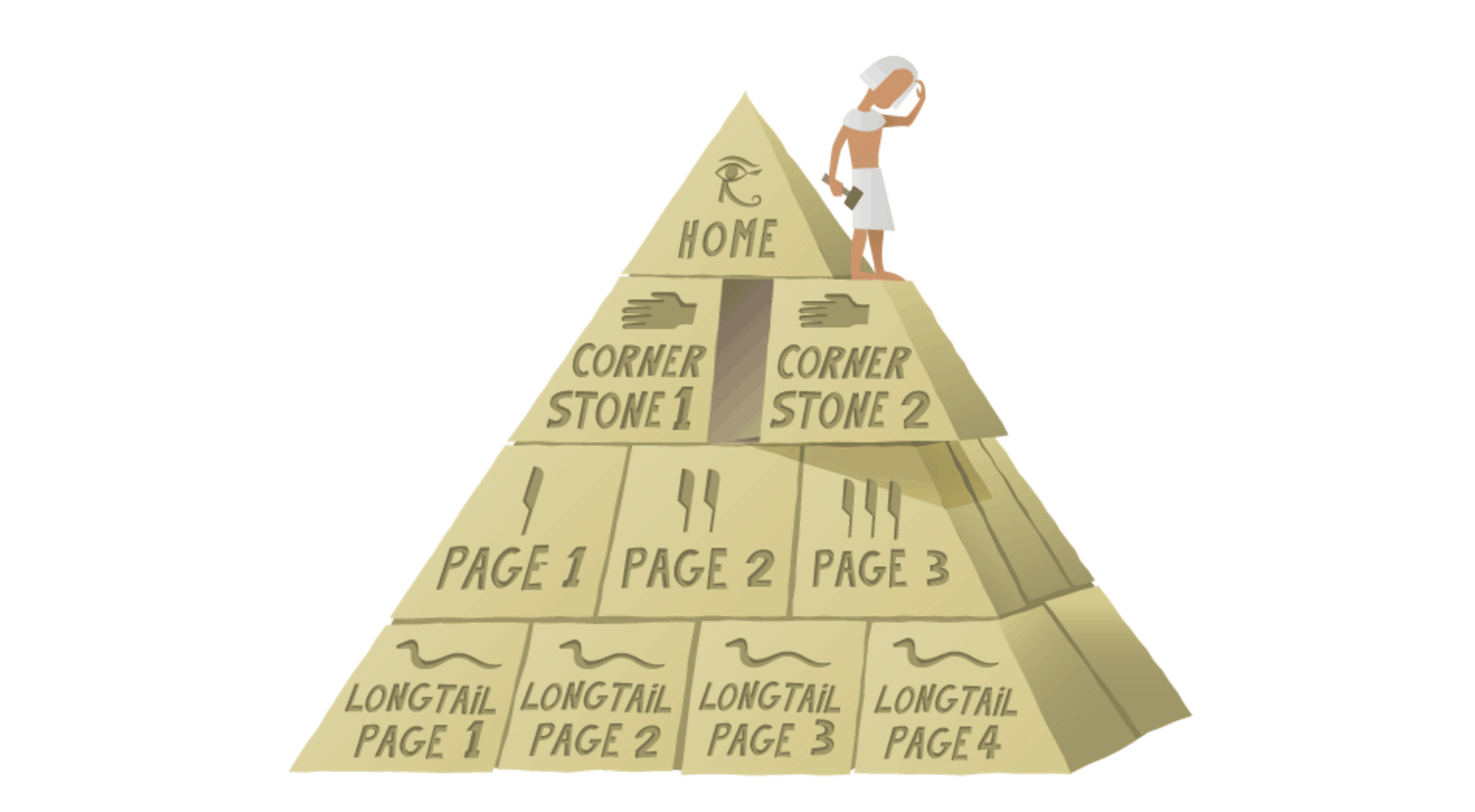Kinh Nghiệm về Hướng dẫn how do i move a blog post to a page in wordpress? - làm cách nào để di tán một bài đăng blog đến một trang trong wordpress? 2022
Họ tên bố(mẹ) đang tìm kiếm từ khóa Hướng dẫn how do i move a blog post to a page in wordpress? - làm cách nào để di tán một bài đăng blog đến một trang trong wordpress? được Cập Nhật vào lúc : 2022-11-27 01:28:02 . Với phương châm chia sẻ Thủ Thuật Hướng dẫn trong nội dung bài viết một cách Chi Tiết 2022. Nếu sau khi tham khảo tài liệu vẫn ko hiểu thì hoàn toàn có thể lại phản hồi ở cuối bài để Mình lý giải và hướng dẫn lại nha.WordPress makes it incredibly easy to set your website up the way you want it. Sometimes, though, it is not as easy to make changes to get the desired effect. One example is if you want to change a post to a page, or a page to a post. By default, WordPress doesn’t let you change the post type when a post (or page) is already published.
Nội dung chính Show- What is the Difference Between a Post and a Page in WordPress?How to Change a Post to a PageWhen Should You Change a WordPress Post to a Page?Are Pages Actually Superior to Posts for SEO?Suy nghĩ cuối cùngBạn hoàn toàn có thể thay đổi một bài đăng thành một trang trong WordPress không?Sự khác lạ giữa một trang blog và một bài đăng trên blog là gì?
Fortunately, there is a super simple plugin that allows you to change a post to a page (or vice versa). Keep reading to learn the difference between a post and a page, what plugin you need to change back and forth, and why you’d want to change a post to a page.
What is the Difference Between a Post and a Page in WordPress?
Put simply, there is one major distinction between posts and pages in WordPress. Posts include a timestamp, which implies a certain level of timeliness to the information being offered. They are listed in reverse chronological order on your homepage and all of your archive pages, unless you do something to change the order. Pages are “static,” lacking a timestamp and, in theory, remaining forever relevant to your visitors.
Another, less important difference is that while posts can be labeled with categories and tags, pages cannot. You can nest them beneath other pages, though.
This infographic by Kristen Symonds explains the differences very well:

Traditionally, if you are using WordPress to create a blog, most of your content is going to be created as posts. You will have many fewer pages: an about page, a contact page, perhaps a privacy policy, and whatever other miscellaneous pages you decide to add.
How to Change a Post to a Page
WordPress doesn’t allow you to change a post type by default. Tasked with a need to switch your post to a page, your inclination might be to simply copy and paste the post content to a new page. Then delete the old post. Unfortunately, this isn’t the best approach.
Fortunately, there is a plugin that allows you to accomplish this simple task.

Post Type Switcher is the most well-known plugin for this purpose. As shown in the image above, it simply adds a drop-down menu to your Publish box that allows you to change the post type.
You can also change the type using Quick Edit on your Posts or Pages list, or using the bulk editor.

This plugin comes in handy, of course, if you create a post or a page as the wrong type. Instead of having to recreate the post or page, you can simply switch it to the post type you intended.
There is another reason you might want to change a WordPress post to a page, though. Keep reading to learn why.
When Should You Change a WordPress Post to a Page?
Often, you will link to your pages in your navigation or your footer – on every single page of your website. That means that as far as your site’s hierarchy goes, those pages are rather high up. They have a lot of power. Search engines are good recognizing their importance relevant to the posts on your site.
Know what else should be high in your website’s hierarchy? Cornerstone content. Coined by Brian Clark in a 2007 article for Copyblogger, cornerstone content or “flagship content” is basic, instructional, and essential information. This kind of content is “broad and wide,” and serves as a long-form introduction to one of the major themes on your site.

Joost de Valk, founder of Yoast, explained in this article why he believes cornerstone content should be created as a page: “In my opinion, really important content deserves a page within your site’s structure, not a news item/post. It should be easily navigated to within a few clicks.”
There are other advantages to creating this content as a page, if you do it right. For one thing, in most situations, pages do not include a timestamp. This can make the content seem more timeless, as long as you keep it up to date. Also, while they are not included in your archives, pages are perfect for including in your site’s navigational architecture, and can serve as link hubs for whenever you write about a related topic.
Often, you won’t realize you’re creating cornerstone content when you first create it. Often, cornerstone content begins as a regular blog post. Then, you expand on it and expand on it until it becomes obvious how important that one post has become. Using a plugin like Post Type Switcher, you can change that post to a page. This allows you to improve your website’s hierarchy and benefit from the additional search engine optimization (SEO) benefits pages enjoy in WordPress.
Are Pages Actually Superior to Posts for SEO?
Of course, as with most things SEO, there is not necessarily a clear answer about what is actually better. Some argue that posts have some advantages in that WordPress will automatically create a clear linking structure for the post through its categories, tags, and other archives. There can also be some benefits to having a timestamp appear on your post. If you’ve updated it recently, it can make your content look especially fresh — something search engines like Google seem to value.
Một số trang web và blog dường như luôn có nội dung tiên tiến nhất lúc chúng xuất hiện trong kết quả công cụ tìm kiếm. Điều này thường là vì người tạo nội dung đi qua và điều chỉnh một chút ít thông tin được đáp ứng, sau đó update ngày tạo nội dung.
Suy nghĩ ở đầu cuối
Ở đó bạn có nó - một cách siêu đơn giản để thay đổi một bài đăng thành một trang (hoặc bất kỳ loại bài đăng nào khác). Cho dù bạn muốn thay đổi nhiều chủng loại bài đăng vì bạn đã tạo nội dung dưới dạng loại sai hoặc bạn muốn nâng một bài đăng lên trạng thái Cornerstone, plugin plugin loại bài đăng là một giải pháp đơn giản.
Bạn đã bao giờ cần thay đổi bài đăng WordPress thành một trang hoặc ngược lại? Chia sẻ nguyên do của bạn cho công tắc nguồn và cách nó đi trong những ý kiến dưới đây!
Hình ảnh của Boo-Tique / Shutterstock.com
Bạn hoàn toàn có thể thay đổi một bài đăng thành một trang trong WordPress không?
Sử dụng một plugin như trình quy đổi loại bài, bạn hoàn toàn có thể thay đổi bài đăng đó thành một trang.Điều này được cho phép bạn cải tổ khối mạng lưới hệ thống phân cấp và quyền lợi của trang web của bạn từ những trang Lợi ích Tối ưu hóa Công cụ Tìm kiếm (SEO) tương hỗ update được hưởng trong WordPress.. This allows you to improve your website's hierarchy and benefit from the additional search engine optimization (SEO) benefits pages enjoy in WordPress.Sự khác lạ giữa một trang blog và một bài đăng trên blog là gì?
Hãy nghĩ về những trang như nội dung tĩnh của bạn hoặc loại nội dung một lần của bạn sẽ hiếm khi cần thay đổi.Đây hoàn toàn có thể là trang về trang của bạn và được xem là một thực thể vượt thời gian.Mặt khác, những bài đăng là những mục blog của bạn hoặc nội dung động được thêm vào thường xuyên.Posts on the other hand are your blog entries or dynamic content that gets added regularly.Tải thêm tài liệu liên quan đến nội dung bài viết Hướng dẫn how do i move a blog post to a page in wordpress? - làm cách nào để di tán một bài đăng blog đến một trang trong wordpress? programming wordpress Post Type Switcher WordPress posts page
